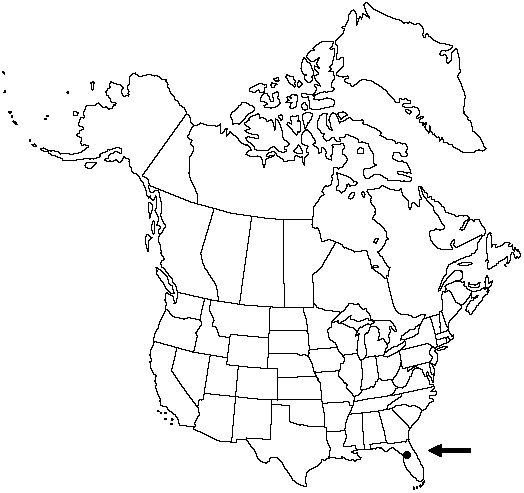Asplenium plenum
Ferns S. E. States 173. 1938.
Roots proliferous. Stems erect, unbranched; scales blackish throughout, narrowly deltate, 0.4–1.1 × 0.3–0.7 mm, margins entire to denticulate. Leaves monomorphic. Petiole blackish throughout, dull, 2–6 (–10) cm, 1/4–2/5 length of blade; indument absent. Blade lanceolate, 1–2-pinnate, (4–) 8–12 (–15) × 1.5–5 cm, thin, glabrous; base not tapered; apex gradually narrowing. Rachis mostly green except occasionally blackish at base, dull, glabrous. Pinnae in (5–) 10–20 (–25) pairs, oblong-deltate, 1–3.5 × 0.5–1.8 cm; base excavate on basiscopic side; apex pointed. Pinnules linear to oblong, 4–10 mm; apex mostly notched. Veins free, not conspicuous. Sori mostly 1 per segment, 1–3 mm. Spores mostly abortive, some viable. 2n = 144.
Habitat: Limestone rocks in shaded forests
Elevation: 0–50 m
Distribution

Fla.
Discussion
Asplenium plenum occurs with its parents on limestone rocks in shaded forests and is known only from Florida, although it could occur in the Antilles, Central America, and South America (D. B. Lellinger 1981). It is noteworthy for constituting one of the first known examples of backcrossing and formation of a new taxon by unreduced spores from a sterile hybrid. According to V. M. Morzenti (1967) and G. J. Gastony (1986), hybridization between A. abscissum and A. verecundum produced A. × curtissii. An unreduced spore of the hybrid gave rise to a 3 x gametophyte. This gametophyte produced a 3 x sperm that backcrossed with an x egg of A. abscissum producing the 4 x allotetraploid, A. plenum, that is not only capable of propagation by minute root proliferations like those of the parents but also to some extent by spores. This complex hypothesis was confirmed by electrophoretic comparisons of the plants involved (G. J. Gastony 1986).
Selected References
None.
Lower Taxa
No values specified."/4lengthofblade" is not declared as a valid unit of measurement for this property.